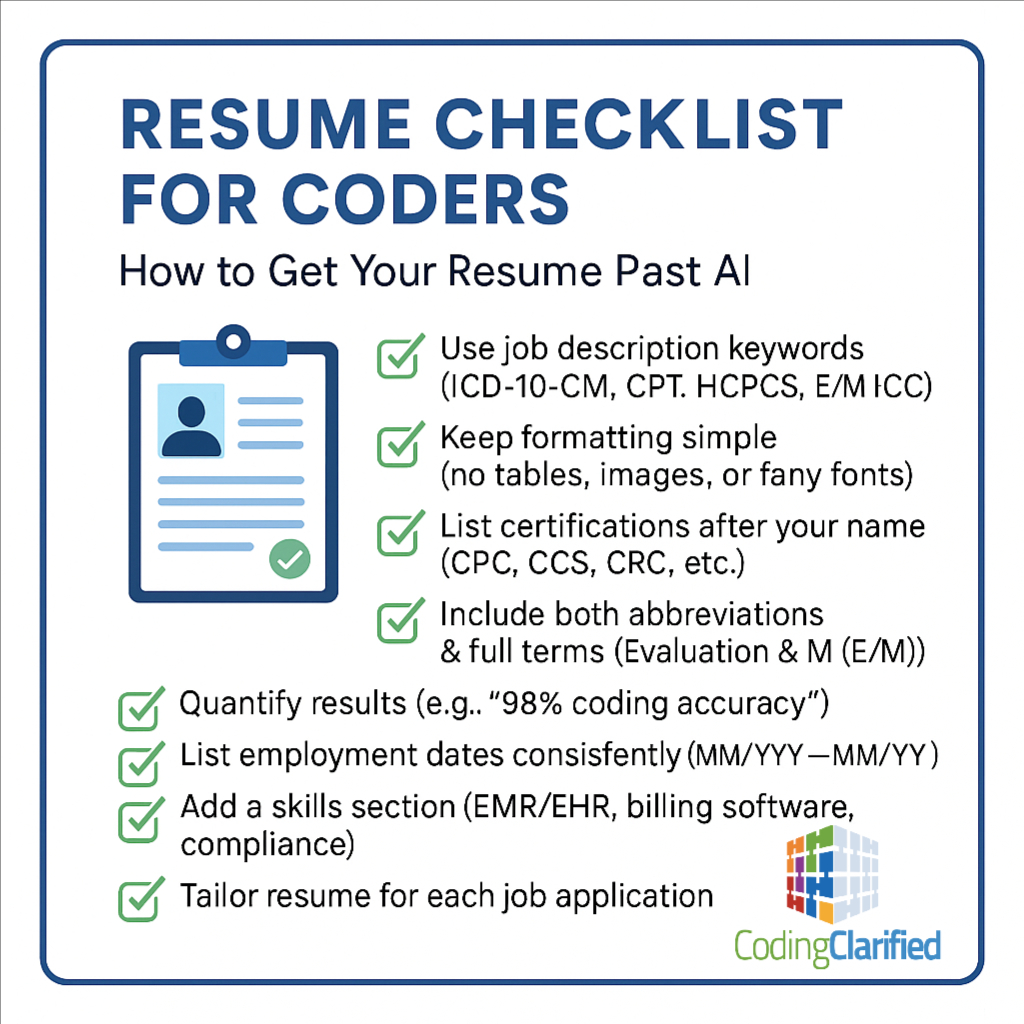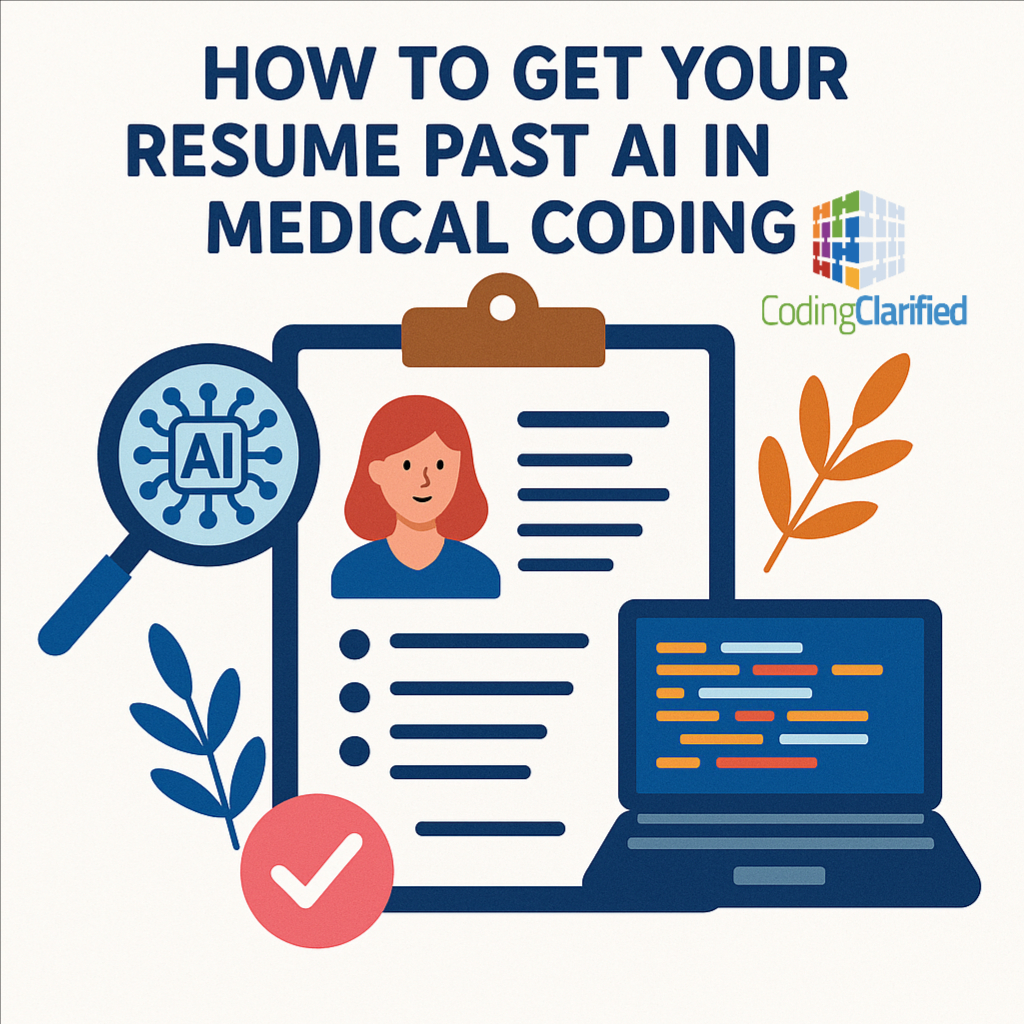Why AI Resume Screeners Matter
In today’s hiring landscape, many employers in healthcare and medical coding use Applicant Tracking Systems (ATS) powered by artificial intelligence (AI) to filter resumes before they ever reach a recruiter or coding manager. If your resume isn’t optimized for these systems, it may never get reviewed by a human—even if you’re highly qualified. Understanding how AI evaluates resumes, and how to get your resume past AI in medical coding, is key to moving forward in your job search.
Common AI Resume Filters in Medical Coding
-
Keyword Matching: AI looks for exact matches to job description keywords (e.g., CPT coding, ICD-10-CM, HCPCS, risk adjustment, E/M coding).
-
Formatting Recognition: Overly complex designs, images, or unusual fonts can confuse ATS systems.
-
Experience Parsing: AI scans for role titles and dates to measure progression and stability.
-
Credential Identification: Certifications like CPC, CCS, CRC, or COC should be spelled out and listed consistently.
Practical Tips to Beat the AI and Stand Out
Mirror the Job Description
-
Use the same keywords and phrases that employers list.
-
Example: If the posting says “risk adjustment coding,” don’t only write “HCC coding.” Include both terms if they apply.
Use a Clean, ATS-Friendly Format
-
Stick with standard fonts like Arial, Calibri, or Times New Roman.
-
Avoid tables, graphics, or text boxes.
-
Save in .docx or .pdf formats only if the posting allows them.
Highlight Credentials and Skills Clearly
-
Place certifications (CPC-A, CPC, CCS, CRC, etc.) right after your name.
-
Add a Skills Section with coding systems, EMR/EHR platforms, and billing software.
-
Emphasize compliance knowledge (HIPAA, OIG guidelines).
Quantify Your Experience
-
AI systems favor measurable results.
-
Example: “Reviewed 200+ outpatient claims weekly with 98% accuracy” instead of “Reviewed outpatient claims.”
Include Both Abbreviations and Full Terms
-
Write “Current Procedural Terminology (CPT)” the first time, then use CPT throughout.
-
Do the same with Evaluation & Management (E/M) and Hierarchical Condition Categories (HCC).
Keep Employment Dates Consistent
-
AI often rejects resumes that are missing months/years.
-
Always list MM/YYYY – MM/YYYY or “Present.”
Customize for Every Job
-
One-size-fits-all resumes rarely pass.
-
Tailor your resume for each role—emphasize outpatient coding for hospital jobs or HCC coding for risk adjustment positions.
Example of an ATS-Optimized Medical Coding Resume Summary
“Certified Professional Coder (CPC) with 3+ years of experience in outpatient and risk adjustment coding. Skilled in ICD-10-CM, CPT, HCPCS, and E/M guidelines with a proven record of 98% coding accuracy and compliance with CMS and OIG regulations. Proficient in Epic and Cerner EMR systems. Strong background in telehealth coding and 2025/2026 guideline updates.”
Getting your resume past AI is not about tricking the system—it’s about presenting your qualifications in the language the system recognizes. By aligning your resume with job descriptions, highlighting credentials, and maintaining clean formatting, you significantly increase your chances of moving forward to interviews.
In medical coding, precision is everything—and the same is true for your resume. A well-structured, keyword-rich resume shows both AI and employers that you’re detail-oriented and ready to succeed.
Two of our favorites for Resume creation


